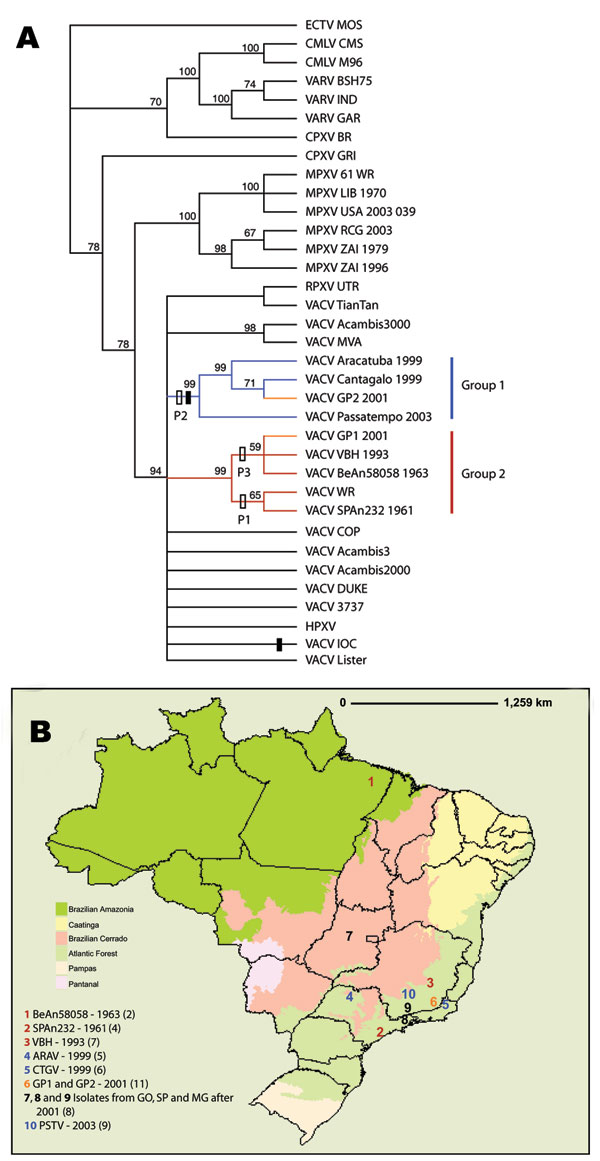Volume 13, Number 7—July 2007
Perspective
Brazilian Vaccinia Viruses and Their Origins
Figure 2

Figure 2. A) Strict consensus of the 6 most parsimonious trees derived from Orthopoxvirus species on the basis of B19R, E3L, and A56R sequences and rooted with ectromelia virus from Moscow (ECTV-MOS). Bootstrap values based on 100 bootstrap replicates of 10 random addition replicates each are shown at each node where the value was >50%. Black rectangles represent the 18-nt deletion shared by group 1 Brazilian vaccinia virus (BRZ-VACV) and VACV-Institute Oswaldo Cruz (IOC) and where it maps on the tree. Open rectangles represent the 3 digestion profiles (P1, P2, and P3) of the rpo132-ATI-p4c-A27L region assigned at each appropriate node. Blue, branches of group 1; red, branches of group 2; orange, isolation of VACV-Guarani P1 (GP1) and VACV-GP2 at adjacent farms in the same area. Colors correspond to information presented in panel B. B) Map of Brazil showing states and ecological biomes. Collection sites are represented by numbers that refer to Brazilian isolates and their respective years of isolation. Map used with permission from Instituto Brasileiro de Geografia e Estatistica. GO, Goiás; SP, São Paulo; MG, Minas Gerais. See Table 2 for other definitions.